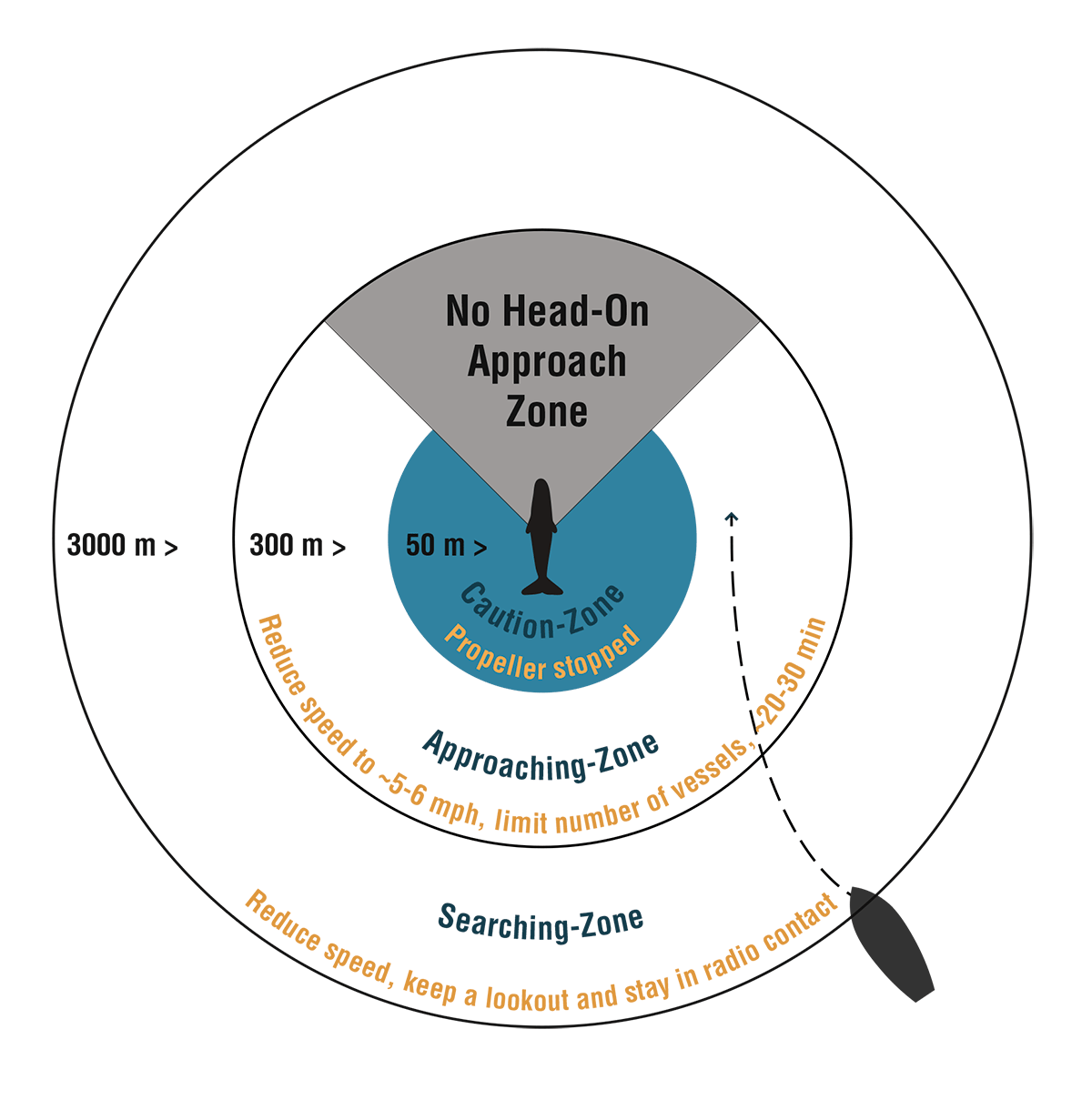Guidelines for operating vessels around cetaceans
1. Approach the area of marine mammal activity with extreme caution. Look in all directions before planning your approach or departure.
2. Reduce speed to less than 5 knots when within 200 meters of the nearest cetacean. Avoid sudden course or speed changes.
3. Avoid driving towards any cetacean closer than 100 meters while the engine is in gear, unless you are approaching from the right angle.
4. Aim to approach and depart from whales from the side, following the direction of travel of the animal. Never approach from the front or from the behind. See figure.
5. If you are approached by a whale or dolphin you should:
a. Continue on your course with little change in direction or speed
b. Stop the vessel to allow the animal to interact with you or move away.
6. Limit your time engaged in viewing to a maximum of 30 minutes, to minimize the cumulative impact of many vessels.
7. Limit the number of boats around an animal to 2 and try to stay on the same side where possible.
8. Keep clear of the path of the animals.
9. Do not attempt to drive through groups of porpoises or dolphins for the purpose of bow riding. Should these animals choose to ride the bow wave of your vessel, gradually reduce speed and avoid sudden course changes

